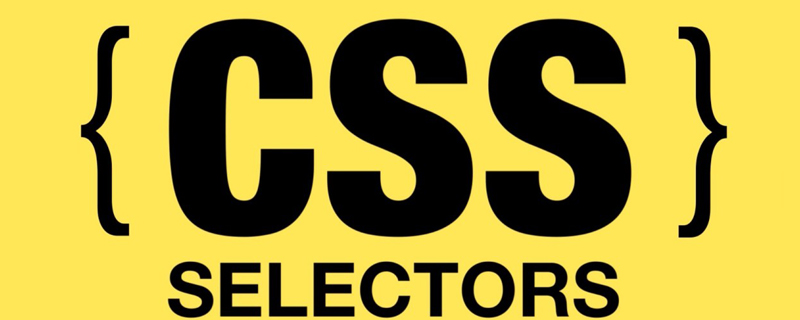Common getElementById, getElementsByName, getElementsByTagName. But foreigners were not satisfied with these APIs, so they came up with getElementsByClassName. Later, jQuery selectors appeared little by little. Here we only talk about original js selection.
1.getElementById
This is the most commonly used selector, located by id:
Example:
var test=document.getElementById(" test").value;//Get the value of the element with id test in the document and assign it to test face changing
2.getElementsByName
Example:
var test= document.getElementByName("test");//Get the node of the element named test in the document and assign it to the test variable. At this time, the test variable is an array
3.getElementsByTagName
Example:
var test=document.getElementsByTagName("test");//Get the node of the element with class test in the document and assign it to test. At this time, the test variable is an array, and this selector is in Cannot be used in IE5, 6, 7, 8
4.getElementsByClassName
This selector cannot be found in the js API. If you want to use it, you must define the method yourself. The usual principle First, use getElementsByTagName("*") to retrieve all elements in the document, then traverse, use regular expressions to find matching elements, put them into an array and return them. There are many programmers on the Internet who have implemented this selector. Here are two examples:
(1) The Ultimate getElementsByClassName scheme, authored by Robert Nyman, was implemented in 2005. It can be seen that many things by foreigners have been implemented a long time ago Very far away.
//All three parameters are required, find one There are 5007 elements with the class name "cell" in the web page. IE8 lasts 1828 ~ 1844 milliseconds,
//IE6 is 4610 ~ 6109 milliseconds, FF3.5 is 46 ~ 48 milliseconds, opera10 is 31 ~ 32 milliseconds, and Chrome is 23~26 milliseconds,
//safari4 is 19 ~ 20 milliseconds
function getElementsByClassName(oElm, strTagName, strClassName){
var arrElements = (strTagName == "*" && oElm.all)? oElm. all :
oElm.getElementsByTagName(strTagName);
var arrReturnElements = new Array();
strClassName = strClassName.replace(/-/g, "\-");
var oRegExp = new RegExp("(^|\s)" strClassName "(\s|$)");
var oElement;
for(var i=0; i oElement = arrElements[i];
if(oRegExp.test(oElement.className)){
arrReturnElements.push(oElement);
}
}
return (arrReturnElements)
}
(2) Provided by Dustin Diaz (author of "JavaScript Design Patterns"), but the compatibility is not as good as the above and does not support IE5.
//The last two parameters are reliable, find a web page There are 5007 elements with the class name "cell". IE8 lasts 78 milliseconds, IE6 lasts 125~171 milliseconds
// FF3.5 is 42 ~ 48 milliseconds, opera10 is 31 milliseconds, Chrome is 22 ~ 25 milliseconds, safari4 is 18 ~ 19 milliseconds
var getElementsByClass = function(searchClass,node,tag) {
var classElements = new Array();
if ( node == null )
node = document;
if ( tag == null )
tag = '*';
var els = node.getElementsByTagName(tag);
var elsLen = els.length;
var pattern = new RegExp(" (^|\s)" searchClass "(\s|$)");
for (i = 0, j = 0; i if ( pattern.test(els[ i].className) ) {
classElements[j] = els[i];
j ;
}
}
return classElements;
}
------------------------------------------------ -------------------------------------------------- -------------------------------------------------- ----
Note: this can represent the node of the current element.
-------------------------------------------------- -------------------------------------------------- -------------------------------------------------- --------
The following are some commonly used methods to match knowledge points such as events:
//Submit the form with id test
document.getElementById("test").submit();
//Set the border of the element with id test to 2 pixels, solid, red
document.getElementById("test").style.border="2px solid red";
//The mouse moves or moves out of the element with id test, Change its background color
function test(){
document.getElementById("test").onmouseover=function(){document.getElementById("test2").style.backgroundColor="red"} ;
document.getElementById("test").onmouseout=function(){document.getElementById("test2").style.backgroundColor="blue"};
}
//Pop up The number of elements with the name test in the document
function test()
{
var test=document.getElementsByName("test");
alert(test.length);
}
 css中id选择符的标识是什么Sep 22, 2022 pm 03:57 PM
css中id选择符的标识是什么Sep 22, 2022 pm 03:57 PM在css中,id选择符的标识是“#”,可以为标有特定id属性值的HTML元素指定特定的样式,语法结构“#ID值 {属性 : 属性值;}”。ID属性在整个页面中是唯一不可重复的;ID属性值不要以数字开头,数字开头的ID在Mozilla/Firefox浏览器中不起作用。
 使用:nth-child(n+3)伪类选择器选择位置大于等于3的子元素的样式Nov 20, 2023 am 11:20 AM
使用:nth-child(n+3)伪类选择器选择位置大于等于3的子元素的样式Nov 20, 2023 am 11:20 AM使用:nth-child(n+3)伪类选择器选择位置大于等于3的子元素的样式,具体代码示例如下:HTML代码:<divid="container"><divclass="item">第一个子元素</div><divclass="item"&
 css伪选择器学习之伪类选择器解析Aug 03, 2022 am 11:26 AM
css伪选择器学习之伪类选择器解析Aug 03, 2022 am 11:26 AM在之前的文章《css伪选择器学习之伪元素选择器解析》中,我们学习了伪元素选择器,而今天我们详细了解一下伪类选择器,希望对大家有所帮助!
 javascript选择器失效怎么办Feb 10, 2023 am 10:15 AM
javascript选择器失效怎么办Feb 10, 2023 am 10:15 AMjavascript选择器失效是因为代码不规范导致的,其解决办法:1、把引入的JS代码去掉,ID选择器方法即可有效;2、在引入“jquery.js”之前引入指定JS代码即可。
 从入门到精通:掌握is与where选择器的使用技巧Sep 08, 2023 am 09:15 AM
从入门到精通:掌握is与where选择器的使用技巧Sep 08, 2023 am 09:15 AM从入门到精通:掌握is与where选择器的使用技巧引言:在进行数据处理和分析的过程中,选择器(selector)是一项非常重要的工具。通过选择器,我们可以按照特定的条件从数据集中提取所需的数据。本文将介绍is和where选择器的使用技巧,帮助读者快速掌握这两个选择器的强大功能。一、is选择器的使用is选择器是一种基本的选择器,它允许我们根据给定条件对数据集进
 css中的选择器包括超文本标记选择器吗Sep 01, 2022 pm 05:25 PM
css中的选择器包括超文本标记选择器吗Sep 01, 2022 pm 05:25 PM不包括。css选择器有:1、标签选择器,是通过HTML页面的元素名定位具体HTML元素;2、类选择器,是通过HTML元素的class属性的值定位具体HTML元素;3、ID选择器,是通过HTML元素的id属性的值定位具体HTML元素;4、通配符选择器“*”,可以指代所有类型的标签元素,包括自定义元素;5、属性选择器,是通过HTML元素已经存在属性名或属性值来定位具体HTML元素。
 深度解析is与where选择器:提升CSS编程水平Sep 08, 2023 pm 08:22 PM
深度解析is与where选择器:提升CSS编程水平Sep 08, 2023 pm 08:22 PM深度解析is与where选择器:提升CSS编程水平引言:在CSS编程过程中,选择器是必不可少的元素。它们允许我们根据特定的条件选择HTML文档中的元素并对其进行样式化。在这篇文章中,我们将深入探讨两个常用的选择器,即:is选择器和where选择器。通过了解它们的工作原理和使用场景,我们可以大大提升CSS编程的水平。一、is选择器is选择器是一个非常强大的选择
 wxss选择器有哪些Sep 28, 2023 pm 04:27 PM
wxss选择器有哪些Sep 28, 2023 pm 04:27 PMwxss选择器有元素选择器、类选择器、ID选择器、伪类选择器、子元素选择器、属性选择器、后代选择器和通配选择器等。详细介绍:1、元素选择器,使用元素名称作为选择器,选取匹配的元素,使用“view”选择器可以选取所有的“view”组件;2、类选择器,使用类名作为选择器,选取具有特定类名的元素,使用“.classname”选择器可以选取具有“.classname”类名的元素等等。


Hot AI Tools

Undresser.AI Undress
AI-powered app for creating realistic nude photos

AI Clothes Remover
Online AI tool for removing clothes from photos.

Undress AI Tool
Undress images for free

Clothoff.io
AI clothes remover

AI Hentai Generator
Generate AI Hentai for free.

Hot Article

Hot Tools

Atom editor mac version download
The most popular open source editor

VSCode Windows 64-bit Download
A free and powerful IDE editor launched by Microsoft

MinGW - Minimalist GNU for Windows
This project is in the process of being migrated to osdn.net/projects/mingw, you can continue to follow us there. MinGW: A native Windows port of the GNU Compiler Collection (GCC), freely distributable import libraries and header files for building native Windows applications; includes extensions to the MSVC runtime to support C99 functionality. All MinGW software can run on 64-bit Windows platforms.

SublimeText3 Linux new version
SublimeText3 Linux latest version

mPDF
mPDF is a PHP library that can generate PDF files from UTF-8 encoded HTML. The original author, Ian Back, wrote mPDF to output PDF files "on the fly" from his website and handle different languages. It is slower than original scripts like HTML2FPDF and produces larger files when using Unicode fonts, but supports CSS styles etc. and has a lot of enhancements. Supports almost all languages, including RTL (Arabic and Hebrew) and CJK (Chinese, Japanese and Korean). Supports nested block-level elements (such as P, DIV),






